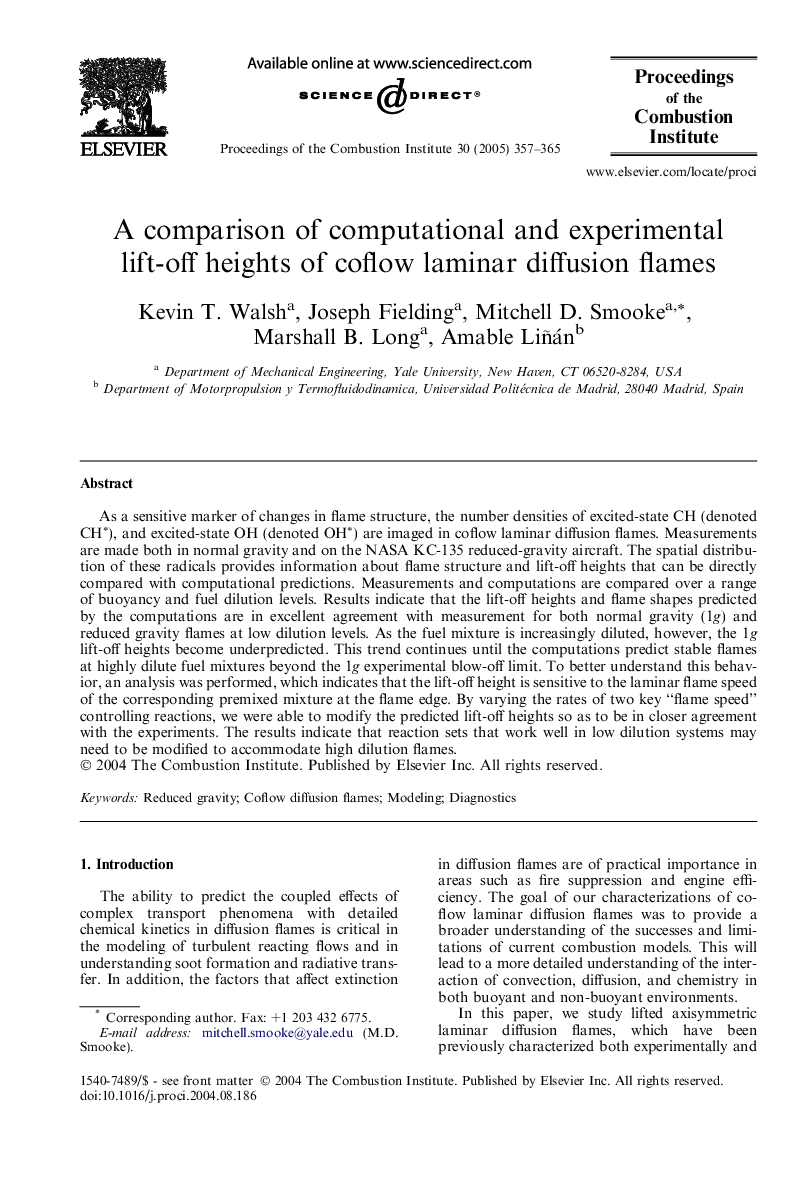| Article ID | Journal | Published Year | Pages | File Type |
|---|---|---|---|---|
| 9637354 | Proceedings of the Combustion Institute | 2005 | 9 Pages |
Abstract
As a sensitive marker of changes in flame structure, the number densities of excited-state CH (denoted CHâ), and excited-state OH (denoted OHâ) are imaged in coflow laminar diffusion flames. Measurements are made both in normal gravity and on the NASA KC-135 reduced-gravity aircraft. The spatial distribution of these radicals provides information about flame structure and lift-off heights that can be directly compared with computational predictions. Measurements and computations are compared over a range of buoyancy and fuel dilution levels. Results indicate that the lift-off heights and flame shapes predicted by the computations are in excellent agreement with measurement for both normal gravity (1g) and reduced gravity flames at low dilution levels. As the fuel mixture is increasingly diluted, however, the 1g lift-off heights become underpredicted. This trend continues until the computations predict stable flames at highly dilute fuel mixtures beyond the 1g experimental blow-off limit. To better understand this behavior, an analysis was performed, which indicates that the lift-off height is sensitive to the laminar flame speed of the corresponding premixed mixture at the flame edge. By varying the rates of two key “flame speed” controlling reactions, we were able to modify the predicted lift-off heights so as to be in closer agreement with the experiments. The results indicate that reaction sets that work well in low dilution systems may need to be modified to accommodate high dilution flames.
Keywords
Related Topics
Physical Sciences and Engineering
Chemical Engineering
Chemical Engineering (General)
Authors
Kevin T. Walsh, Joseph Fielding, Mitchell D. Smooke, Marshall B. Long, Amable Liñán,
